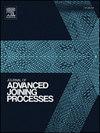Multi-objective optimization of welding-induced residual stress and deflection in 6082-T6 aluminum alloy using validated thermo-mechanical modeling
IF 4
Q2 MATERIALS SCIENCE, MULTIDISCIPLINARY
引用次数: 0
Abstract
Welding of aluminum alloys often introduces residual stress and deflection, compromising dimensional precision and structural performance. This study investigates the influence of key process parameters of gas metal arc welding on the thermo-mechanical response of 6082-T6 aluminum alloy butt joints. A numerical method was developed and validated using experimental measurements of temperature distribution (thermocouples), deflection (3D laser scanning), and residual stress(X-ray diffraction). A full-factorial design of experiments (DOE) was conducted, varying clamping configuration, plate thickness, welding sequence, and cooling conditions. Analysis of variance (ANOVA) quantified main and interaction effects. The study identified a trade-off between deflection and residual stress, which was addressed through multi-objective optimization using a desirability function approach. Deflection was reduced from 1.44 mm (measured experimentally) to 0.6 mm under optimized conditions, while the minimum residual stress was 171 MPa, representing a decrease of approximately 12%. The optimum condition corresponded to a partially restrained clamping configuration, a plate thickness of 4 mm, a continuous single pass welding sequence, and natural air cooling. Predictive models based on ensemble regression techniques were constructed using the 72 DOE-based FEM cases and validated with experimental measurements to estimate responses and rank influential parameters. The models achieved an R² values of 0.93 for deflection and an R² value of 0.94 for residual stress. Consistency between statistical and predictive analyses confirmed the dominant factors. The optimization framework offers a data-driven approach to improve welded structural integrity and highlights the potential of integrated simulation and data analysis in materials processing and design.
基于验证热力学模型的6082-T6铝合金焊接残余应力和挠度多目标优化
铝合金焊接常产生残余应力和变形,影响尺寸精度和结构性能。研究了气体保护金属弧焊关键工艺参数对6082-T6铝合金对接接头热-力学响应的影响。利用温度分布(热电偶)、偏转(3D激光扫描)和残余应力(x射线衍射)的实验测量,开发了一种数值方法并进行了验证。实验(DOE)的全因子设计进行了不同的夹紧配置,板的厚度,焊接顺序和冷却条件。方差分析(ANOVA)量化了主效应和交互效应。该研究确定了挠度和残余应力之间的权衡,并通过使用可取函数方法进行多目标优化。在优化条件下,挠度从1.44 mm(实验测量)减少到0.6 mm,最小残余应力为171 MPa,降低了约12%。最佳条件对应于部分受限夹紧配置,板厚为4mm,连续单道焊接顺序和自然空气冷却。利用72个基于doe的FEM案例构建了基于集合回归技术的预测模型,并通过实验测量进行验证,以估计响应并对影响参数进行排序。模型得到的挠度R²值为0.93,残余应力R²值为0.94。统计分析和预测分析之间的一致性证实了主导因素。优化框架提供了一种数据驱动的方法来提高焊接结构的完整性,并突出了材料加工和设计中集成模拟和数据分析的潜力。
本文章由计算机程序翻译,如有差异,请以英文原文为准。
求助全文
约1分钟内获得全文
求助全文

 求助内容:
求助内容: 应助结果提醒方式:
应助结果提醒方式:


